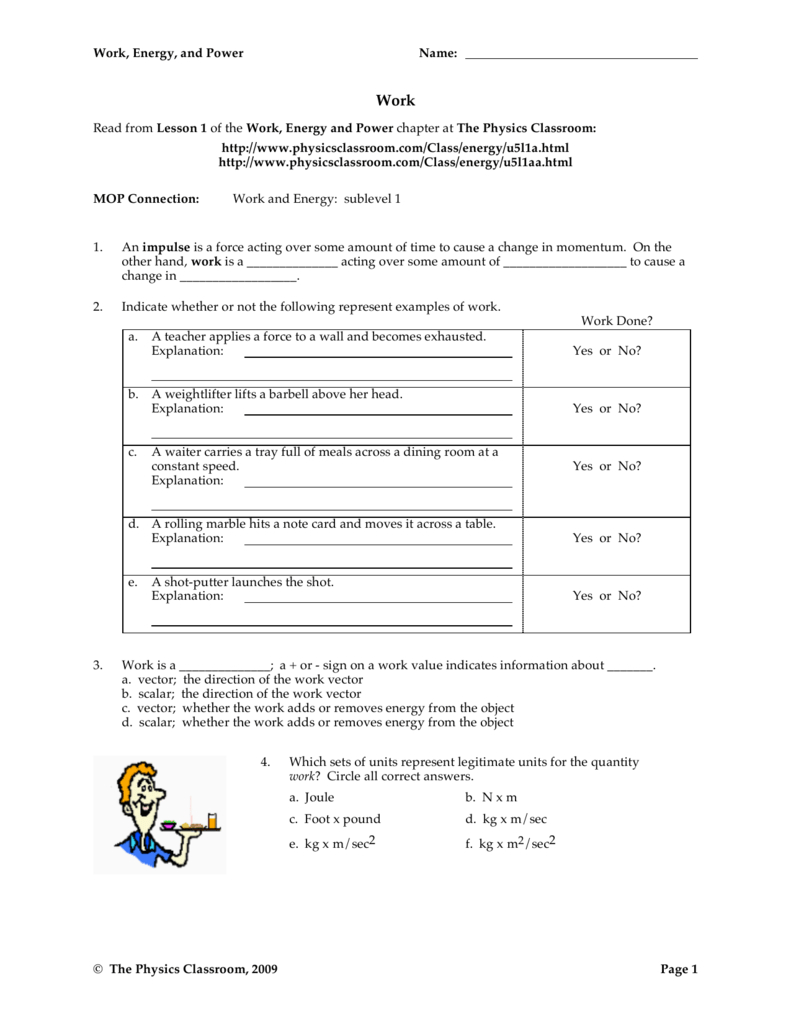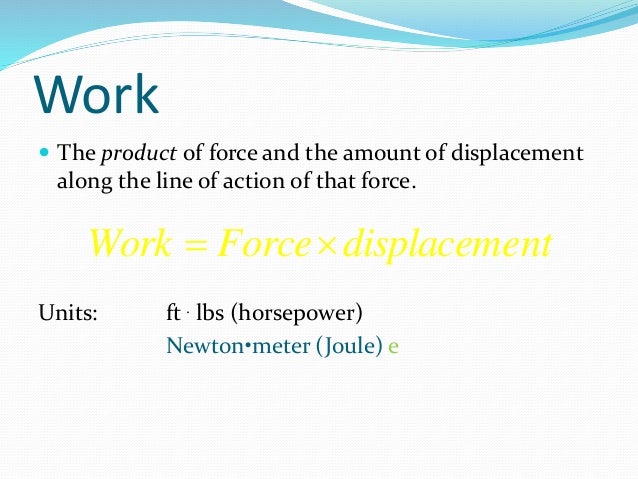
As a result, the work done by a force can be positive, negative, or zero, depending on whether the force is generally in the direction of the displacement, generally opposite to the displacement, or perpendicular to the displacement. The components of a vector can be positive, negative, or zero, depending on whether the angle between the vector and the component-direction is between 0 ° 0 ° and 90 ° 90 ° or 90 ° 90 ° and 180 ° 180 °, or is equal to 90 ° 90 °. Recall that the magnitude of a force times the cosine of the angle the force makes with a given direction is the component of the force in the given direction. From the properties of vectors, it doesn’t matter if you take the component of the force parallel to the displacement or the component of the displacement parallel to the force-you get the same result either way. In words, you can express Equation 7.1 for the work done by a force acting over a displacement as a product of one component acting parallel to the other component. Which choice is more convenient depends on the situation. In two dimensions, these were the x- and y-components in Cartesian coordinates, or the r- and φ φ-components in polar coordinates in three dimensions, it was just x-, y-, and z-components. We could equally well have expressed the dot product in terms of the various components introduced in Vectors. We choose to express the dot product in terms of the magnitudes of the vectors and the cosine of the angle between them, because the meaning of the dot product for work can be put into words more directly in terms of magnitudes and angles. The infinitesimal work is the dot product of these two vectors the total work is the integral of the dot product along the path. The force acting on a particle and its infinitesimal displacement are shown at one point along the path between A and B.

Simple machines can change the amount of force that is necessary to move an object, but the force must be applied through a larger distance they don't change the amount of work done.Figure 7.2 Vectors used to define work. The mathematical relationships between total work and total energy are described by the work-energy theorem and conservation of energy. By applying a force on the ball over this distance, the hand is doing work on the ball, and the ball gains kinetic energy. Throwing a ball means a hand applies a force as an arm swings forward. When work is done by a system or object, it gives some of its energy to something else. When work is done on a system or object, energy is added to it. Work changes the amount of mechanical and internal energy possessed by objects. It is only something that one object does to another. In the physics sense, work is never something an object has. If the directions are opposite, such as the force applied by friction and air drag to a moving car, the system's energy will decrease resulting in negative work done. If both directions are the same, as they are in Figure 1, the system's energy will increase meaning positive work was done. This means that they have an associated direction with them, which have important implications for how much work is done to an object. The arrows above force and displacement indicate that they are vectors. W is work, or a change in mechanical energy, measured in joules (J).

However, the two processes are fundamentally different, and can be explored on the heat vs work page.Īll of the cases described so far of how work can affect a system can be summed up in a single equation: W=\Delta K + \Delta U + \Delta E_ Doing work on a system can affect its internal energy, just like adding heat can. In 1843 this idea began to be explored by scientists, and its results led to the formulation of what is now known as thermodynamics.

It can also affect the microscopic properties of a system, such as temperature. Work also extends beyond what a person can physically see. His arm goes back as far as possible and then as forward as possible in order to maximize the distance the force was applied. A pitcher does work on a baseball in order to increase its kinetic energy.


 0 kommentar(er)
0 kommentar(er)
